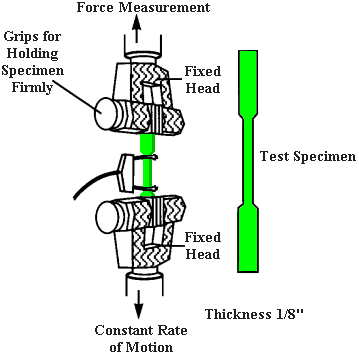The mechanical properties of nonwoven material characterize the response of the material to applied forces and deformations. These have always been regarded as the most important properties technically because they contribute to the behavior of the nonwoven during processing and to the performance of the finished product during use.
The following are some of the mechanical properties:
- Resiliency
- Elastic recovery
- Relaxation
- Tensile properties
- Toughness
- Creep (deformation during processing)
- Elastic properties (modulus)
- Flexural integrity
 Tensile strength (TS) or Ultimate Tensile Strength is the maximum stress that a material can withstand while being stretched or pulled before failing or breaking. Tensile strength is the opposite of compressive strength and the values can be quite different.
Tensile strength (TS) or Ultimate Tensile Strength is the maximum stress that a material can withstand while being stretched or pulled before failing or breaking. Tensile strength is the opposite of compressive strength and the values can be quite different.
Some materials will break sharply, without deforming, in what is called a brittle failure. Others, which are more ductile, including most metals, will stretch some - and for rods or bars, shrink or neck at the point of maximum stress as that area is stretched out. Tensile strength is defined as a stress, which is measured as force per unit area.
TYPICAL TENSILE STRENGTHS
| MATERIAL | Yield strength (MPa) | ULTIMATE STRENGTH (MPa) | DENSITY (grms/cm3) |
|---|---|---|---|
| Polypropylene | 12-43 | 19.7-80 | 0.91 |
| Nylon, type 6/6 | 45 | 75 | 1.15 |
| High density polyethylene | 26-33 | 37 | .095 |
| Polyethylene Terephthalate (PET) | 55 |
